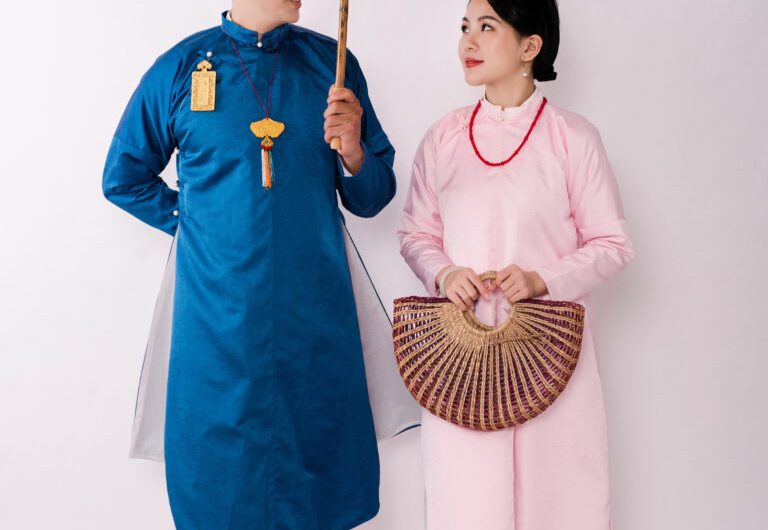Traditional Vietnamese costumes, known collectively as Việt Phục, represents a unique reflection of the nation’s long history, artistry, and refined aesthetic sense. Over centuries, Việt Phục has evolved through dynasties and cultural exchanges, yet it continues to embody the grace and dignity of Vietnamese identity. Among the most iconic and recognizable forms of Việt Phục are Nhật Bình, Áo Tấc, Áo Ngũ Thân Tay Chẽn, Áo Giao Lĩnh, and Áo Viên Lĩnh. Each costume tells a different story of status, function, and symbolism — from royal grandeur to daily elegance.
This article offers an in-depth look at these five traditional garments, helping modern Vietnamese and cultural enthusiasts alike appreciate their meaning, design, and enduring legacy.
1. Nhật Bình – The Queen’s Everyday Splendor
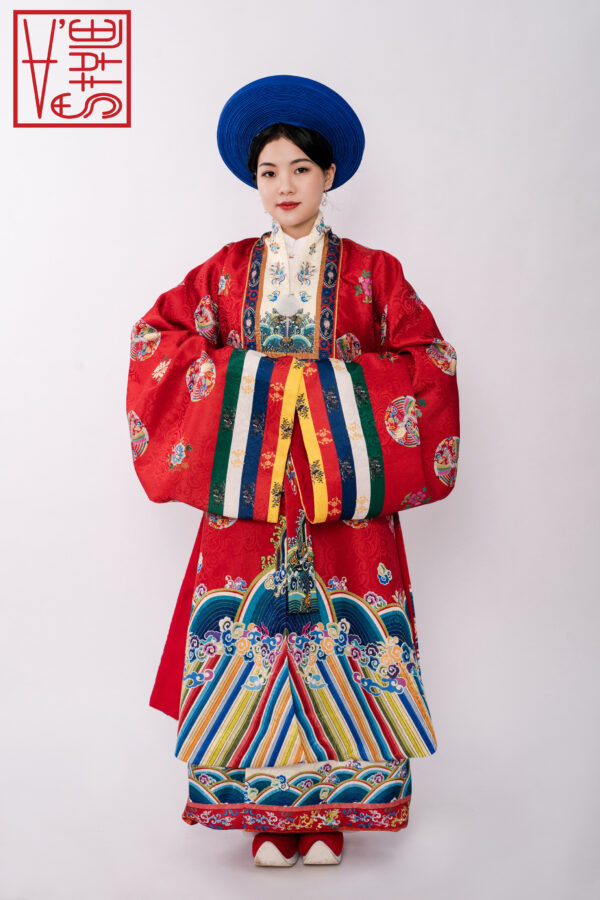
Among all types of traditional Vietnamese costumes, Nhật Bình stands out as one of the most recognizable and majestic. Originating during the Nguyễn Dynasty, it was the everyday formal wear of empresses, princesses, and high-ranking concubines in the royal court. The name “Nhật Bình” means “sun-shaped collar,” referencing its distinctive rectangular neckline, a hallmark of the garment’s structure.
A key figure in popularizing the Nhật Bình both in Vietnam and abroad was Empress Nam Phương, the last empress of Vietnam, whose refined image in the attire became iconic. Traditionally, this costume was reserved exclusively for women, representing both status and virtue.
The royal color system of the Nguyễn dynasty dictated strict usage:
- The empress’s robe was yellow, the most prestigious hue in imperial fashion, symbolizing power and the central element in the Five Elements (Ngũ Hành).
- Princesses often wore red, complemented with decorative multicolored stripes at the cuffs symbolizing balance among the elements.
- Other variations such as purple or peach pink were used for different ranks or ceremonies.
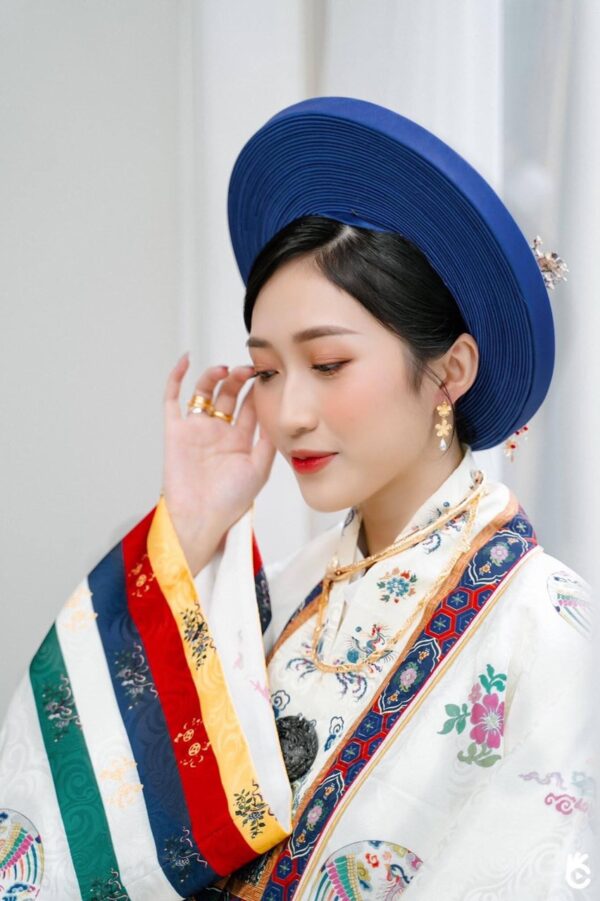
Today, Nhật Bình has transcended royal boundaries. It has become a beloved choice for weddings, Tết festivals, and photo sessions, offering a blend of tradition and elegance. Designers now create versions in soft pastel tones such as white, orange, or lavender, preserving the original silhouette while adapting to modern aesthetics.
In terms of structure, an authentic Nhật Bình features a bell-shaped or A-line design, without shoulder seams or darts, ensuring comfort and grace. The wide cut allows for freedom of movement and flatters various body types — even expectant mothers find it comfortable to wear. When a bride dons a white Nhật Bình today, she evokes both purity and the timeless dignity of Vietnamese heritage.
2. Áo Tấc – The Grand Robe of Formality
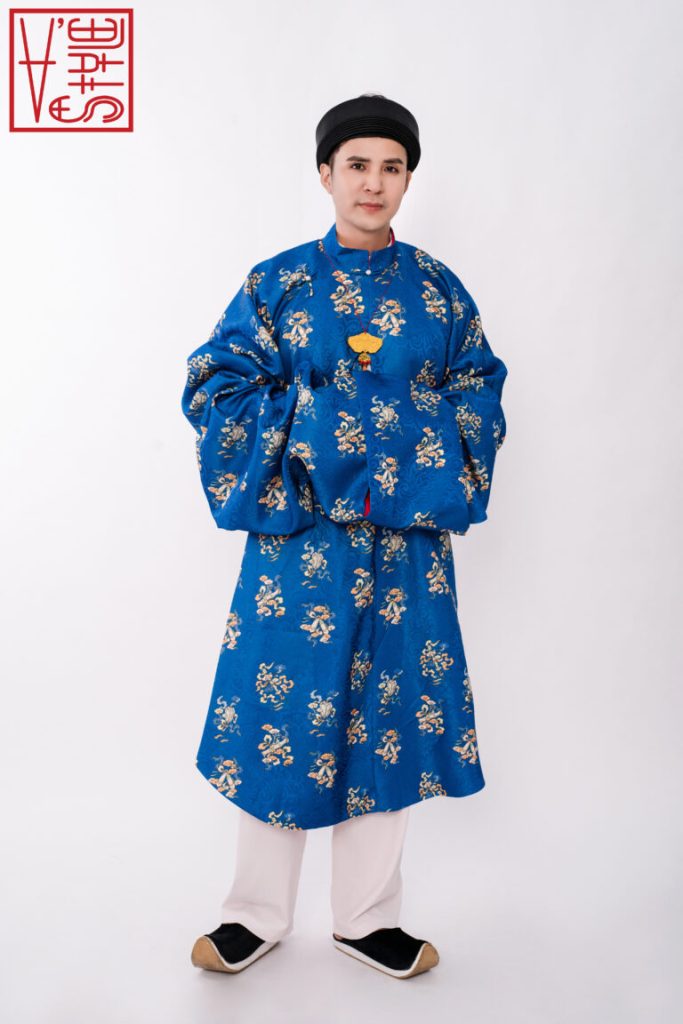
If the Nhật Bình represents feminine nobility, the Áo Tấc embodies formality and solemnity for both men and women. Known also as Áo Ngũ Thân Lập Lĩnh Tay Thụng, this five-paneled robe carries deep philosophical meaning as well as aesthetic value.
The term “Ngũ Thân” (five bodies) refers to the robe’s five panels — four representing one’s parents and ancestors and one representing the self. The joining seam at the back, called the trung phùng, symbolizes the bond between heaven and earth, between generations past and present. Wearing the Áo Tấc, therefore, was not merely a matter of fashion but a statement of filial piety and respect for family roots.
Its Lập Lĩnh (standing collar) and Tay Thụng (wide sleeves) give the Áo Tấc its characteristic solemn appearance. The sleeves fall gracefully, often longer than the hem, forming a rectangular shape when folded in front of the chest — a posture associated with reverence and ceremony.
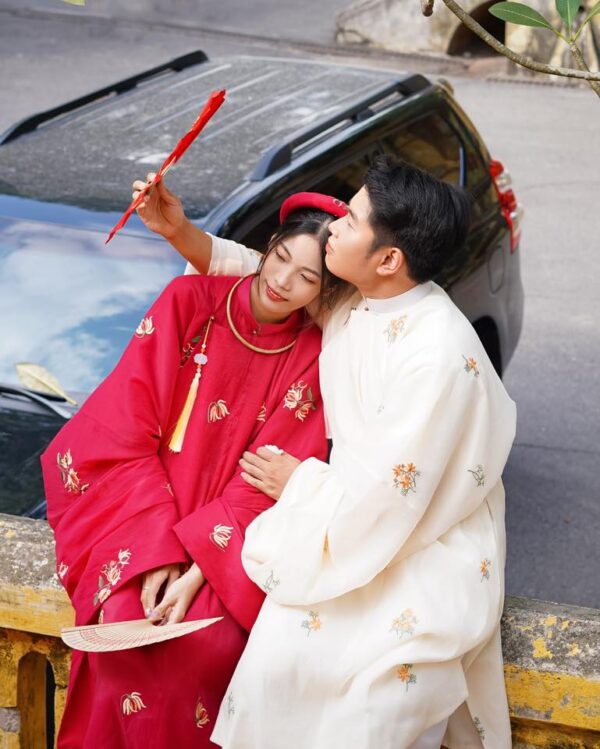
Traditionally, the Áo Tấc was made from luxurious materials such as silk, gauze, or brocade, and could feature embroidered motifs of dragons, phoenixes, or longevity characters (thọ). For formal events like imperial ceremonies, ancestor worship, or weddings, both men and women wore Áo Tấc paired with long pants and headpieces — the khăn đóng (for men) and the khăn lươn (for women).
Even today, the Áo Tấc is often chosen for traditional weddings, where it enhances the solemnity of the moment. Brides and grooms in Áo Tấc V’style, for example, appear regal yet culturally grounded, embodying the perfect harmony between heritage and celebration.
3. Áo Ngũ Thân Tay Chẽn – The Ancestral Form of the Modern Áo Dài
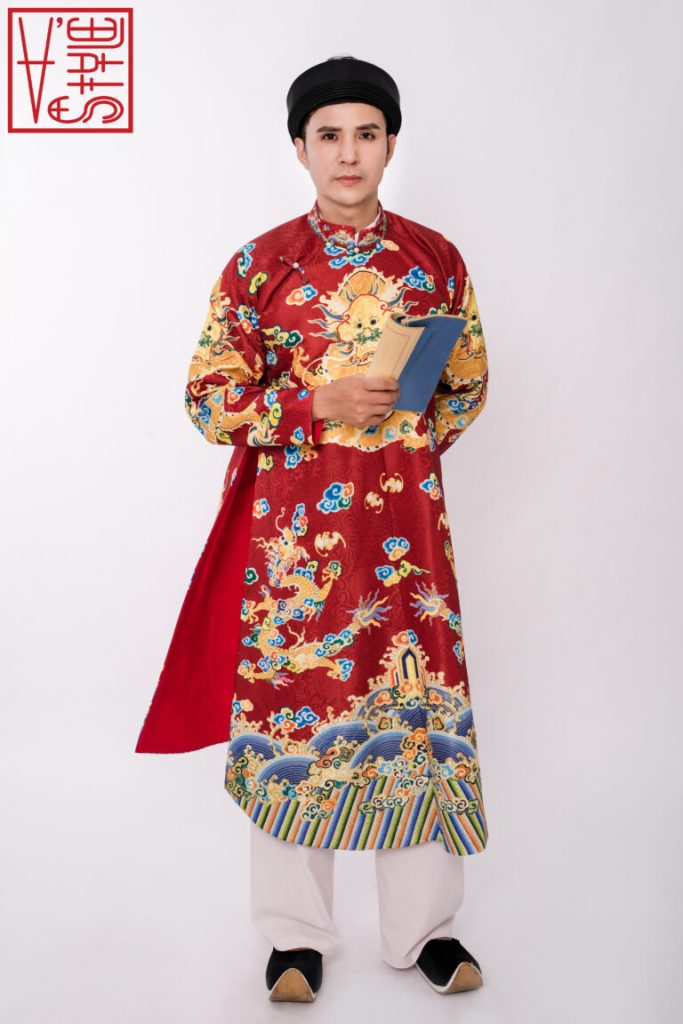
A close relative of the Áo Tấc, the Áo Ngũ Thân Tay Chẽn retains the symbolic five-panel structure but differs in practicality. The term “Tay Chẽn” means narrow sleeves, making this version more fitted and convenient for daily movement.
Essentially, this is the transitional form between the Áo Tấc and the modern Áo Dài. Like the Áo Tấc, it features five panels, five buttons, and a standing collar, but its slimmer sleeves and shorter length make it more versatile. The result is a costume that maintains traditional dignity while offering everyday functionality.
During the Nguyễn Dynasty, the Áo Ngũ Thân Tay Chẽn became popular among both genders. Men wore darker, subtler colors for scholarly or official purposes, while women preferred lighter tones with embroidered motifs. Accessories such as jade pendants, bracelets, or small pouches further emphasized refinement and decorum.
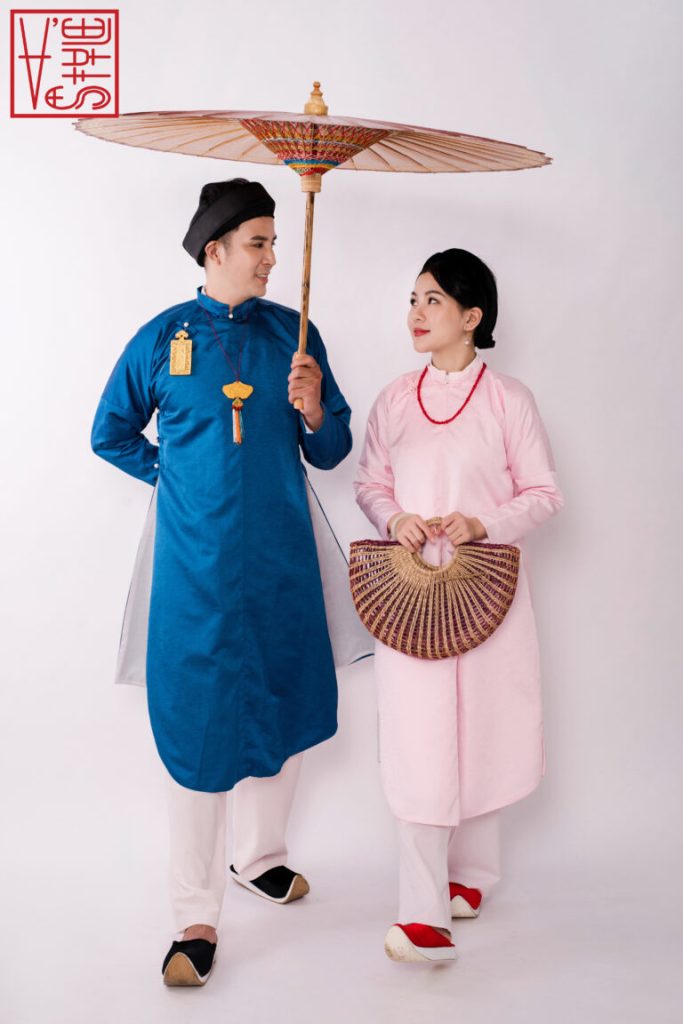
Modern renditions of this outfit are seeing a revival, particularly in pre-wedding photoshoots and cultural festivals, where couples often choose matching sets to express nostalgia and national pride. The fitted silhouette flatters the wearer, combining modesty and charm — qualities deeply rooted in Vietnamese aesthetics.
4. Áo Giao Lĩnh – The Timeless Cross-Collar Robe
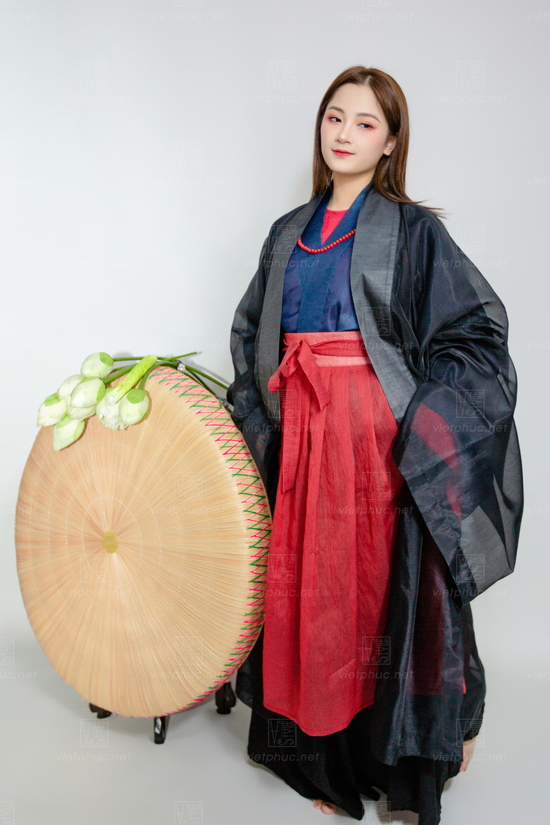
Among all traditional garments, the Áo Giao Lĩnh (also known as Tràng Vạt) is perhaps the oldest and most historically significant. With origins tracing back to the Lý and Trần dynasties (11th–14th centuries), this robe was the most common form of clothing in daily life before the emergence of the Áo Ngũ Thân and Áo Dài.
“Giao Lĩnh” literally means cross-collar, describing the overlapping neckline that forms a “Y” shape across the chest. The upper flap always crosses to the right side, consistent with East Asian etiquette. This design reflects not only practicality but also a shared cultural connection among Vietnam, China, Korea, and Japan — each having its own version of cross-collar robes.
The Áo Giao Lĩnh was versatile and came in two main forms:
- Long Giao Lĩnh: Extended below the knees, worn by both men and women for formal or ceremonial occasions.
- Short Giao Lĩnh: Cropped at the waist, paired with a wrapped skirt (thường) or long pants, often used for daily wear, especially by women.
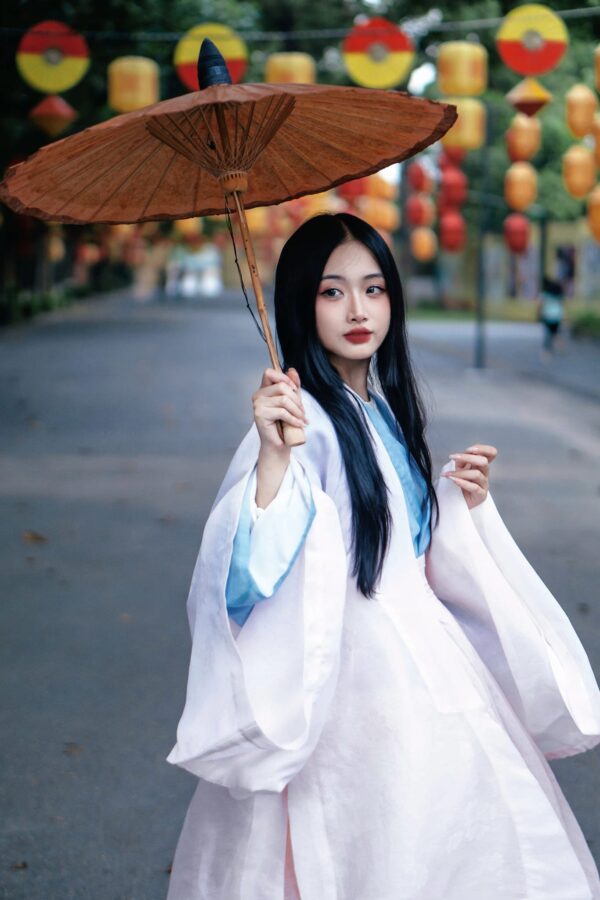
Sleeves could be wide (tay thụng) or narrow (tay chẽn) depending on the era and wearer’s occupation. The design was simple yet elegant, emphasizing fluid motion and balance — symbolic of harmony between humanity and nature.
Today, the Áo Giao Lĩnh has regained popularity through Vietnamese cultural re-enactments, traditional performances, and fashion photoshoots. It serves as a living reminder of Vietnam’s deep-rooted history and its place in the shared East Asian cultural sphere.
5. Áo Viên Lĩnh – The Round-Collar Elegance
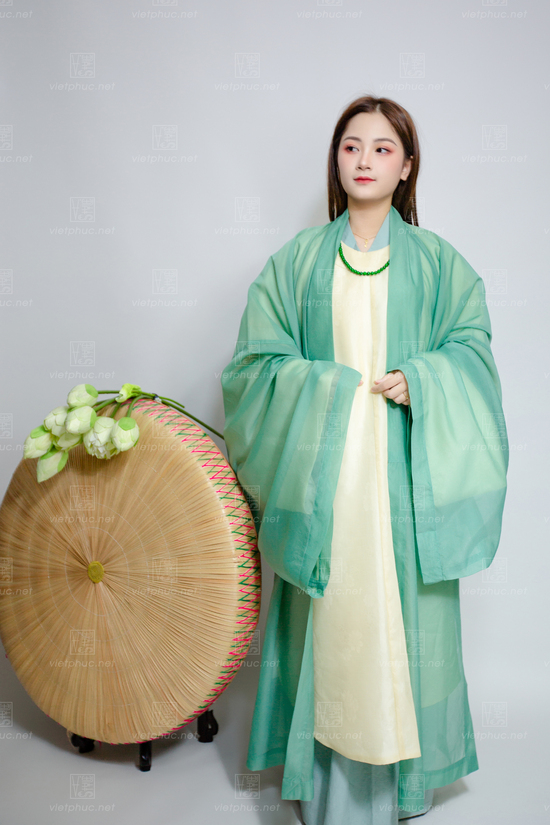
The Áo Viên Lĩnh, also known as Đoàn Lĩnh, represents another graceful evolution of early Vietnamese attire. Like the Giao Lĩnh, it dates back to ancient dynasties but differs in its circular neckline (viên lĩnh), which fastens to the right with small buttons or ties.
This design symbolizes completeness and harmony, values central to Vietnamese philosophy. The round collar’s simplicity provides a gentle contrast to the cross-collar robe, offering a neat and formal appearance suitable for both genders.
In historical contexts, the Viên Lĩnh was often made from soft silk or linen, decorated with subtle embroidery along the edges. It was practical for scholars, mandarins, and the upper class, as well as for festivals and ancestral ceremonies.
In contemporary times, the Viên Lĩnh has become an artistic favorite in the Việt Phục revival movement, appreciated for its balance between formality and minimalism. When paired with traditional accessories such as the khăn đóng or jade pendants, it creates a timeless yet dignified silhouette that celebrates both heritage and modern refinement.
The Cultural Revival of traditional Vietnamese costumes
In recent years, Việt Phục has experienced a powerful renaissance among the younger generation. Social media, cultural exhibitions, and creative studios have reintroduced these garments to modern audiences, not as relics of the past but as living symbols of identity.
Vietnamese couples often choose Nhật Bình or Áo Tấc for weddings, while cultural festivals across the country see a flourishing diversity of styles — from the stately Viên Lĩnh to the poetic Giao Lĩnh. Designers, too, have embraced the Việt Phục aesthetic, blending historical authenticity with contemporary tailoring and vibrant palettes.
More than a fashion statement, wearing Việt Phục today is an act of pride and remembrance — a way to honor ancestors, reconnect with traditional values, and express cultural self-confidence in an increasingly globalized world.
Conclusion: The Living Spirit of Vietnamese Elegance
From the royal splendor of Nhật Bình to the scholarly simplicity of Áo Viên Lĩnh, Việt Phục captures the soul of Vietnam — modest yet refined, elegant yet deeply meaningful. Each stitch, fold, and color speaks of history, hierarchy, and harmony.
As traditional Vietnamese costumes movement continues to grow, it reminds every Vietnamese, both at home and abroad, that true beauty lies in cultural continuity — in wearing not just a piece of fabric, but a story woven from centuries of artistry, respect, and national pride.
In the gentle flutter of silk sleeves and the soft shimmer of brocade, one can still feel the heartbeat of a civilization that has never ceased to cherish its heritage.
(Source: vietphuc.net; Photo: V’style Việt Cổ Phục)

